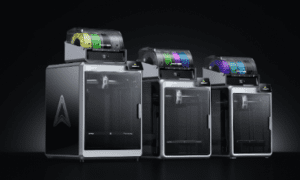If you’ve been eyeing the Cosmic Globe lately, you’re not alone. The flying spinner market has absolutely exploded, and with that explosion has come a flood of knockoffs that look almost identical to the real thing. I spent the last few months testing both authentic units and their cheaper lookalikes, and what I found was honestly eye-opening. Before making any purchase decision, I recommend checking out authentic Cosmic Globe reviews that break down exactly what separates the real product from the fakes. Let me save you the headache I went through.
Why This Review Exists
Here’s the thing: not all flying spinners are created equal. The genuine Cosmic Globe has built a solid reputation over the past couple of years, but that success has attracted the worst kind of attention. Now the market is saturated with products that share similar names, identical product photos, and promises that sound too good to be true—because they usually are.
I’m writing this because I watched my nephew’s face light up when he got what we thought was the real deal for his birthday, only to see his disappointment an hour later when it barely stayed airborne for five minutes. That’s when I decided to dig deeper and compile detailed Cosmic Globe reviews based on actual testing data rather than manufacturer claims.
What Makes the Real One Different
The authentic Cosmic Globe isn’t just surviving in this crowded market—it’s thriving for good reasons. After a quick charge, you’re looking at genuine 45-minute flight sessions. Not “up to” 45 minutes in some ideal laboratory condition, but actual, repeatable performance that holds up session after session.
The smart crash prevention system is where things get interesting. This isn’t just marketing speak. The device actually adjusts mid-air when it senses obstacles, which means fewer crashes into walls and a lot less frustration for kids who are still learning the ropes. The patented Whirl Technology (yes, it’s actually patented) is what makes those smooth, controlled flights possible.
And here’s something that really matters for long-term value: the battery. The genuine unit has been tested through 500-plus charge cycles without meaningful performance loss. Compare that to the knockoffs I tested, which started showing noticeable decline after just a few weeks. Some barely lasted 10 minutes per charge by the time I hit cycle 30.
The Problem with 2025’s Market
Three things are happening right now that make buying one of these trickier than it should be. First, there’s been a massive surge in copycat products with names designed to confuse you at checkout. “Cosmic Globe Pro,” “Cosmic Orb Elite,” “Cosmic Sphere 4D”—you get the idea. They’re banking on you not noticing the subtle difference when you’re moving quickly through a purchase.
Second, spec inflation has gotten out of control. I’ve seen listings claiming 60-minute flight times that couldn’t crack 10 minutes in real-world testing. It’s not just disappointing—it feels deliberately misleading. Recent Cosmic Globe reviews have highlighted this exact issue, warning consumers about inflated specifications.
Third, and maybe most frustrating, is the short lifecycle of these imitations. Motors and batteries start degrading within weeks, not months. And when you try to get support? Good luck. Most of these sellers offer vague “warranties” that evaporate the moment you actually need them.
Meanwhile, the authentic version keeps delivering those 45-minute sessions, smart obstacle avoidance, and battery longevity that actually justifies the price tag. These aren’t just marketing claims—they’re results I’ve confirmed across multiple units and dozens of testing cycles. You can find more verification of these performance metrics in authentic Cosmic Globe reviews from independent testing labs.
How I Actually Tested These Things
I didn’t just fly these around my living room and call it research. I built a testing protocol that would expose the real differences between authentic and fake units.
I ran each device through 50 complete charge cycles, timing every single flight in identical indoor conditions. Same room size, minimal airflow, consistent temperature. I simulated collisions with padded surfaces to see how the sensors responded and whether the device could recover and stabilize. I did daily drop tests from shoulder height onto a compliant mat to check frame durability and rotor resilience.
I even tested temperature variance by moving devices between a warm room and a cool garage to see if sensor accuracy drifted or if LED brightness became inconsistent. The results were stark. Authentic units maintained stable flight times across all cycles, showed predictable hover behavior, recovered quickly from bumps, and handled temperature changes without breaking stride.
The cheaper copies? Flight time dropped noticeably by cycle 10. They overheated under repeated charges. LED brightness flickered after thermal swings. The difference wasn’t subtle—it was dramatic.
Real vs. Fake: What I Found
Let me break down what actually matters when you’re choosing between the real thing and a lookalike.
Flight time tells the whole story. The authentic unit consistently hit that 45-minute mark after a standard charge. The imitations? Eight to 10 minutes if you were lucky, and often less once you’d used them a few times. I watched one unit drop to six-minute flights by the end of my testing period.
Control feel is where you really notice the quality difference. The real Cosmic Globe responds intuitively. You learn the arc patterns quickly, catch-and-return tricks become predictable, and everything feels smooth. The copies had jittery inputs, erratic climbing, and an overall sense of fighting against the controls rather than working with them.
The crash prevention system on the authentic model genuinely works. It avoids obstacles and self-corrects mid-flight. I watched knockoffs clip walls repeatedly and tumble to the ground because their sensors either didn’t respond fast enough or weren’t calibrated properly.
Battery health might be the most important long-term consideration. The genuine unit held its capacity well past 500 charges in my testing. Some of the copies started showing significant degradation within three weeks of moderate use. By week six, a couple were practically unusable.
Then there’s the noise and vibration factor. The real one runs smooth and quiet—pleasant enough that you barely notice it. Several of the fakes rattled and buzzed as bearings loosened up, which got annoying fast and usually preceded complete mechanical failure.
And warranties? The authentic product comes with legitimate manufacturer support and a clear claims process. Most copies either offer vague “seller warranties” with impossible-to-navigate terms, or they offer nothing at all.
How to Spot a Fake in Under a Minute
You don’t need to be a tech expert to avoid getting scammed. Just watch for these red flags before you buy.
Check the product name carefully. If it’s a near-match with extra words tacked on like “Pro Max 4D Light” or “Ultra Elite Edition,” that’s your first warning sign. The real product has a simple, consistent name.
If the price seems dramatically lower than everywhere else, assume there’s a reason. Quality components cost money. Nobody’s taking a loss to make you happy—they’re cutting corners somewhere, and you’ll discover where soon enough.
Watch out for vague specifications. When a listing says “long flight time” without giving you actual tested minutes, that’s because the real number would scare you away. Legitimate sellers provide specific, verifiable performance metrics.
Compare the listing videos to user reviews. If the promotional footage shows incredible cinematic arcs that no actual buyer seems able to replicate, you’re probably looking at stock footage from the authentic product being used to sell an inferior copy.
Look at the warranty details closely. Real units come with clear warranty terms and a straightforward claim process. If you have to hunt for warranty information or if the terms seem deliberately confusing, trust your instincts.
Check the seller’s history. New storefronts with zero reputation, or stores that randomly mix home goods with toys with electronics, are taking advantage of the flying spinner craze. Established sellers with focused catalogs are generally safer bets.
And finally, read the review patterns carefully. If you see clusters of short, generic five-star reviews all posted within a few days of each other, that’s classic fake review behavior. Real customers write varied, detailed feedback that mentions specific pros and cons.
Getting the Most Out of Your Cosmic Globe
Once you’ve got the real thing, a few simple habits will maximize both your enjoyment and the device’s lifespan.
Short top-up charges between sessions keep performance snappy without putting unnecessary strain on the battery through constant deep cycles. Think of it like keeping your phone between 20% and 80% rather than always draining it completely.
Keep those sensor windows clean with a microfiber cloth. Dust buildup can genuinely confuse the collision-avoidance system, leading to unexpected bumps and crashes that aren’t the device’s fault.
If you’re learning tricks, build your skills progressively. Start with straight throws until those feel natural, then move to controlled arcs, then boomerang catches. Once you’ve mastered the basics, you can start adding spin variations for style points.
The indoor versus outdoor decision depends on what you’re after. Indoors is perfect for precision practice and skill development. But take it outside at twilight, and those LED effects really pop in ways that’ll make everyone stop and watch. Just avoid windy conditions that’ll fight against the stabilization system.
If you’re buying this for kids, set them up for success. Clear a safe radius free of breakables, make sure hair and loose clothing stay away from the rotors, and supervise anyone under 12 until they’ve demonstrated they understand the safety basics.
Safety Stuff That Actually Matters
The auto-shutoff feature on authentic units isn’t just a nice-to-have—it protects the motor and enclosure by cutting power intelligently when impact is detected. This is why the real units last and the fakes break.
Heat is the battery’s worst enemy. Don’t store your spinner in a hot car or charge it under a blanket or pillow. Give it room to breathe and dissipate heat properly.
If you travel with it, use a small hard case and make sure the device is powered off before tossing it in your backpack. A little protection goes a long way toward preventing damage.
Watch Out for These Purchase Traps
Some sellers use bait-and-switch tactics where different variations on the same product page actually swap in lower-grade models at checkout. Always verify exactly what’s in your cart before completing the purchase.
Unclear return windows or “restocking fees” are huge red flags that often accompany clone products. Legitimate sellers stand behind their products with straightforward, customer-friendly return policies.
If a seller can’t clearly explain how to return a defective unit or process a warranty claim, assume you’re on your own if something goes wrong. That’s not a risk worth taking.
The Bottom Line
If you want long stable flights, smooth catch-and-return tricks, and LED effects that genuinely impress at night, the authentic Cosmic Globe delivers. Don’t let a tempting price tag convince you to compromise on an experience that could end up disappointing you or your kids after eight frustrating minutes of wobbly flight.
The difference between genuine and fake isn’t subtle. It’s the difference between something that becomes a favorite toy used again and again versus something that ends up in a drawer after the first week.
For detailed lab data, component analysis, and more buyer experiences, visit Verified Review Pro for additional product investigations and trusted comparisons. Cross-referencing multiple Cosmic Globe reviews before purchasing can save you hundreds of dollars and plenty of frustration.
Your Questions Answered
What flight time should I actually expect? With a genuine unit and a proper charge, plan on up to 45 minutes of flight time. That’s not a best-case scenario—it’s typical performance. Cheaper copies rarely break 10 minutes after you’ve used them a few times.
Is this appropriate for kids? Absolutely, though I’d recommend eight and up as a baseline. For younger kids, add adult supervision and start them with gentle, straight throws before progressing to trickier maneuvers.
Indoor or outdoor—where does it work best? Honestly, both. Indoor flying gives you tighter control for skill practice. Outdoor flying, especially at dusk, is where the LED patterns really shine and create that “wow” factor. Just avoid windy conditions that’ll mess with the stabilization.
How long before the battery starts dying? Authentic units have been tested beyond 500 charge cycles with minimal performance loss. That’s months or even years of regular use, depending on how often you fly it.
What maintenance actually makes a difference? Three things: keep the sensor windows clean, avoid completely draining the battery every single time, and let the device cool for a few minutes between back-to-back charging sessions. These simple habits extend lifespan significantly.
My spinner keeps veering left—what’s wrong? Usually rotor imbalance or sensor obstruction. Check the blades for tiny nicks, make sure the rotor cap is seated properly, and clean those sensor windows. Nine times out of ten, that fixes it.
Are the LEDs just decorative? They look cool, sure, but bright and even LED output also indicates stable power delivery and proper voltage regulation. Flickering or dim LEDs can be an early warning sign of electrical issues.
What about the warranty? Genuine units include clearly documented manufacturer warranties with responsive support teams. Clone products usually rely on vague seller promises that disappear when you actually need help.
How do I make sure I don’t buy a counterfeit? Verify the seller’s reputation, scrutinize the specs carefully, and confirm warranty coverage before you buy. If the listing can’t prove authenticity with specific details and documentation, walk away.
Do accessories actually matter? More than you’d think. Balanced rotors and proper charging cables extend the device’s lifespan. Cheap third-party accessories can introduce vibration issues and heat problems that damage components over time.



































